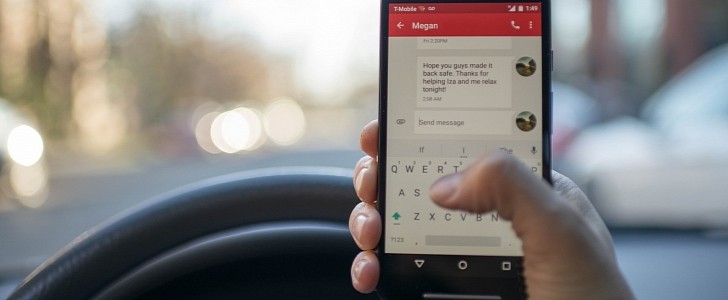A new study by IIHS shows that bans on holding a phone while driving are more efficient at preventing crashes than those that prohibit just talking and texting behind the wheel. The Institute wants more states to adopt stricter cellphone laws to reduce crash rates.
Distracted driving killed more than 3,000 Americans in 2020, a recent study released in April by the NHTSA shows. A big part of the blame lies with cellphone use behind the wheel, a habit that has become common. With varying degrees of success, most states make it illegal to text and drive. Some states have imposed stricter rules, which punish even holding the phone or touching it while driving.
A new study by the IIHS compared the accident statistics for the states where phone use is acceptable to some degree with those where even holding a phone while in the driving seat is illegal. It turns out that the crash rates for states that ban holding phones have decreased way faster than in the states where the law punishes just using the phone.
Monthly crash rates per 100,000 people dropped substantially in Oregon (-9%) and Washington (-11%) after stricter regulations were adopted in 2017. However, California has reported mixed results. All three states adopted rules that say the only acceptable cellphone interaction was via hands-free systems. But there were marked differences, which led to different results.
For instance, Oregon and Washington law bans any “holding” of a cellphone and says explicitly that the ban applies even when the vehicle is stopped temporarily because of traffic or other delays. California law is fuzzier, prohibiting “holding and using” rather than simply holding a phone. This led to interpretations that made the regulation less efficient. For instance, retrieving a forgotten phone from the passenger seat and attaching it to the dashboard mount might not qualify for “holding and using,” although it is distracting as hell.
There’s another difference, based on the fines imposed. In California, the first and second offenders are fined $20 and $50. At the same time, the same is punished by $136 and $234 in Washington and $265 and $440 in Oregon. Recently, California amended its law to add one penalty point to a driver’s license for a second offense if it occurs within three years of the first.
The IIHS study concluded that stricter bans are better at reducing rear-end crash rates, but harsher punishments are also needed. Still, there’s a point where more significant fines can pose more problems than they solve. A more thorough analysis is necessary to learn what works and what doesn’t. If regulators have it their way, even having a phone next to you while driving will be as big an offense as having an open alcohol bottle with you.
A new study by the IIHS compared the accident statistics for the states where phone use is acceptable to some degree with those where even holding a phone while in the driving seat is illegal. It turns out that the crash rates for states that ban holding phones have decreased way faster than in the states where the law punishes just using the phone.
Monthly crash rates per 100,000 people dropped substantially in Oregon (-9%) and Washington (-11%) after stricter regulations were adopted in 2017. However, California has reported mixed results. All three states adopted rules that say the only acceptable cellphone interaction was via hands-free systems. But there were marked differences, which led to different results.
For instance, Oregon and Washington law bans any “holding” of a cellphone and says explicitly that the ban applies even when the vehicle is stopped temporarily because of traffic or other delays. California law is fuzzier, prohibiting “holding and using” rather than simply holding a phone. This led to interpretations that made the regulation less efficient. For instance, retrieving a forgotten phone from the passenger seat and attaching it to the dashboard mount might not qualify for “holding and using,” although it is distracting as hell.
There’s another difference, based on the fines imposed. In California, the first and second offenders are fined $20 and $50. At the same time, the same is punished by $136 and $234 in Washington and $265 and $440 in Oregon. Recently, California amended its law to add one penalty point to a driver’s license for a second offense if it occurs within three years of the first.
The IIHS study concluded that stricter bans are better at reducing rear-end crash rates, but harsher punishments are also needed. Still, there’s a point where more significant fines can pose more problems than they solve. A more thorough analysis is necessary to learn what works and what doesn’t. If regulators have it their way, even having a phone next to you while driving will be as big an offense as having an open alcohol bottle with you.







